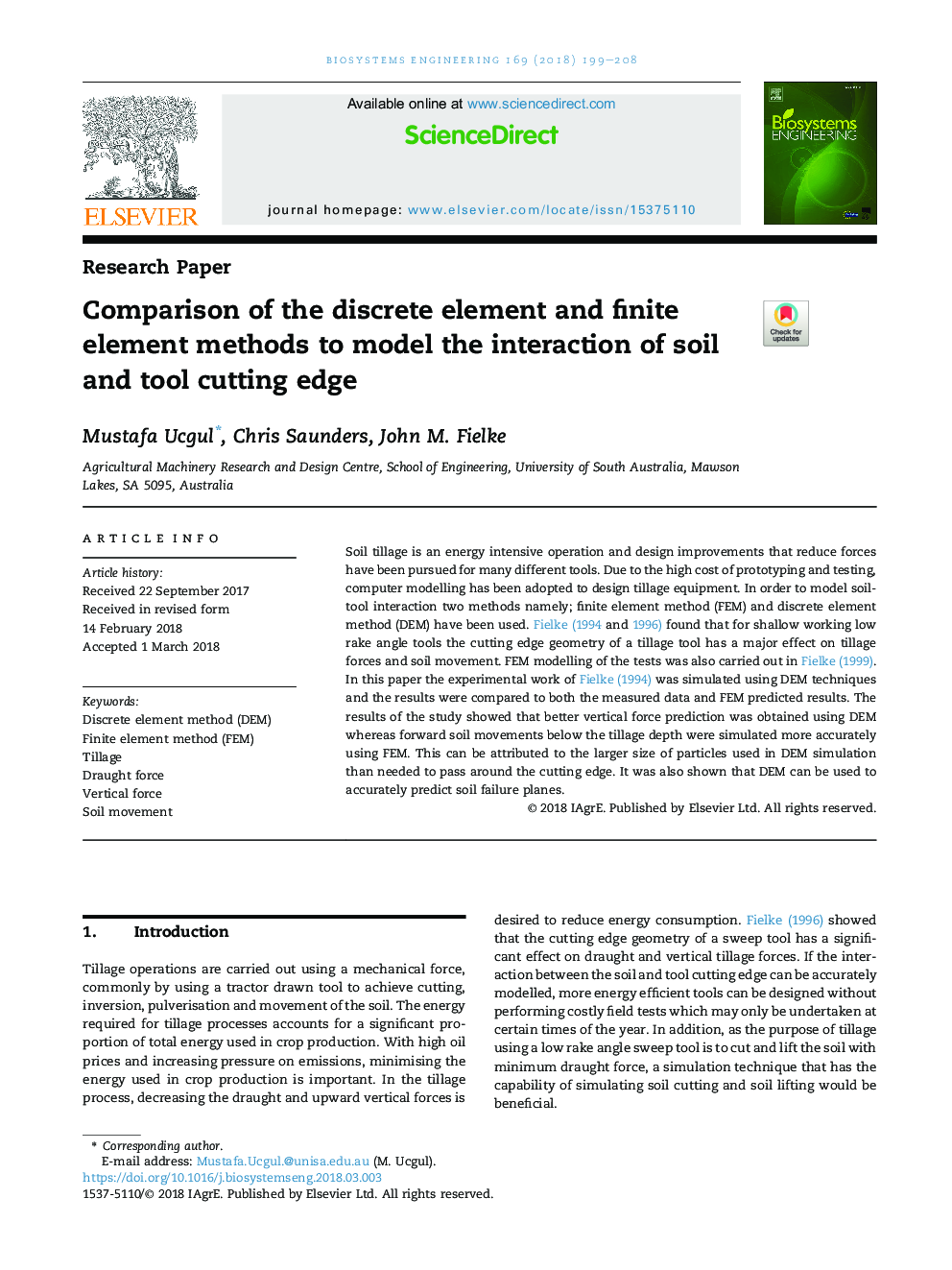| کد مقاله | کد نشریه | سال انتشار | مقاله انگلیسی | نسخه تمام متن |
|---|---|---|---|---|
| 8054757 | 1519492 | 2018 | 10 صفحه PDF | دانلود رایگان |
عنوان انگلیسی مقاله ISI
Comparison of the discrete element and finite element methods to model the interaction of soil and tool cutting edge
ترجمه فارسی عنوان
مقایسه عناصر گسسته و روش های عناصر محدود برای مدل سازی تعامل خاک و ابزار برش لبه
دانلود مقاله + سفارش ترجمه
دانلود مقاله ISI انگلیسی
رایگان برای ایرانیان
کلمات کلیدی
موضوعات مرتبط
مهندسی و علوم پایه
سایر رشته های مهندسی
کنترل و سیستم های مهندسی
چکیده انگلیسی
Soil tillage is an energy intensive operation and design improvements that reduce forces have been pursued for many different tools. Due to the high cost of prototyping and testing, computer modelling has been adopted to design tillage equipment. In order to model soil-tool interaction two methods namely; finite element method (FEM) and discrete element method (DEM) have been used. Fielke (1994 and 1996) found that for shallow working low rake angle tools the cutting edge geometry of a tillage tool has a major effect on tillage forces and soil movement. FEM modelling of the tests was also carried out in Fielke (1999). In this paper the experimental work of Fielke (1994) was simulated using DEM techniques and the results were compared to both the measured data and FEM predicted results. The results of the study showed that better vertical force prediction was obtained using DEM whereas forward soil movements below the tillage depth were simulated more accurately using FEM. This can be attributed to the larger size of particles used in DEM simulation than needed to pass around the cutting edge. It was also shown that DEM can be used to accurately predict soil failure planes.
ناشر
Database: Elsevier - ScienceDirect (ساینس دایرکت)
Journal: Biosystems Engineering - Volume 169, May 2018, Pages 199-208
Journal: Biosystems Engineering - Volume 169, May 2018, Pages 199-208
نویسندگان
Mustafa Ucgul, Chris Saunders, John M. Fielke,
